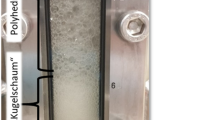Abstract
Citric acid (CA) as an extremely important platform compound has attracted intense attention due to wide applications and huge markets. Here, we proposed a novel method, using pellet inoculation to replace spores, and constructed the seed recycling cultivation process, effectively avoided the longtime (spore preparation 30 days) of seed culture (including spores germination 12 h) in the traditional batch-fermentation. On this basis, using pellet-dispersion strategy, the bottleneck caused by the mycelium structure was overcome, with the seed restoring high cell-viability with CA titer (11.0 g/L) even in the eighth batch compared to that in the control (4.6 g/L). The optimum morphology of these recycling cultured seeds for CA production was dispersed pattern rather than pellets. And the CA production was 130.5 g/L on average in 5 L five-conjoined-fermenters recycling eight batches, especially increasing 3.1 g/L compared with the control. To our knowledge, this is the first that reported the application of these strategies in effective production of CA. Our fermentation strategies not only significantly enhanced CA productivity, but also severed as a promising stepping-stone for other fermentations dominated with the filamentous fungi.





Similar content being viewed by others
References
Dhillon GS, Brar SK, Verma M, Tyagi RD (2011) Recent advances in citric acid bio-production and recovery. Food Bioprocess Technol 4:505–529
Yin X, Li J, Shin HD, Du G, Liu L, Chen J (2015) Metabolic engineering in the biotechnological production of organic acids in the tricarboxylic acid cycle of microorganisms: advances and prospects. Biotech Adv 33:830–841
Soccol CR, Vandenberghe LPS, Rodrigues C, Pandey A (2006) New perspectives for citric acid production and application. Food Technol Biotechnol 44:141–149
Papagianni M (2007) Advances in citric acid fermentation by Aspergillus niger: biochemical aspects, membrane transport and modeling. Biotech Adv 25:244–263
Sauer M, Porro D, Mattanovich D, Branduardi P (2008) Microbial production of organic acids: expanding the markets. Trends Biotechnol 26:100–108
Dhillon GS, Brar SK, Kaur S, Verma M (2013) Bioproduction and extraction optimization of citric acid from Aspergillus niger by rotating drum type solid-state bioreactor. Ind Crop Prod 41:78–84
Xin B, Xia Y, Zhang Y, Aslam H, Liu C, Chen S (2012) A feasible method for growing fungal pellets in a column reactor inoculated with mycelium fragments and their application for dye bioaccumulation from aqueous solution. Bioresour Technol 105:100–105
Vergano MF, Soria M, Kerber N (1996) Short communication: influence of inoculum preparation on citric acid production by Aspergillus niger. World J Microbiol Biotechnol 12:655–656
Arzumanov T, Shishkanova N, Finogenova T (2000) Biosynthesis of citric acid by Yarrowia lipolytica repeat-batch culture on ethanol. Appl Microbiol Biotechnol 53:525–529
Kim SK, Park PJ, Byun HG (2002) Continuous production of citric acid from dairy wastewater using immobilized Aspergillus niger ATCC 9142. Biotechnol Bioprocess Eng 7:89–94
Sankpal NV, Joshi AP, Kulkarni BD (2001) Citric acid production by Aspergillus niger immobilized on cellulose microfibrils: influence of morphology and fermenter conditions on productivity. Process Biochem 36:1129–1139
Garg K, Sharma CB (1992) Continuous production of citric acid by immobilized whole cells of Aspergillus niger. J Gen Appl Microbiol 38:605–615
McIntyre M, Dynesen J, Nielsen J (2001) Morphological characterization of Aspergillus nidulans: growth, septation and fragmentation. Microbiology 147:239–246
Krull R, Wucherpfennig T, Esfandabadi ME, Walisko R, Melzer G, Hempel DC, Kampen I, Kwade A, Wittmann C (2013) Characterization and control of fungal morphology for improved production performance in biotechnology. J Biotechnol 163:112–123
Posch AE, Herwig C, Spadiut O (2013) Science-based bioprocess design for filamentous fungi. Trends Biotechnol 31:37–44
Xu Q, Li S, Huang H, Wen J (2012) Key technologies for the industrial production of fumaric acid by fermentation. Biotechnol Adv 30:1685–1696
Zhou Z, Du G, Hua Z, Zhou J, Chen J (2011) Optimization of fumaric acid production by Rhizopus delemar based on the morphology formation. Bioresour Technol 102:9345–9349
Belmar-Beiny MT, Thomas CR (1991) Morphology and clavulanic acid production of Streptomyces clavuligerus: effect of stirrer speed in batch fermentations. Biotechnol Bioeng 37:456–462
Paul GC, Priede MA, Thomas CR (1999) Relationship between morphology and citric acid production in submerged Aspergillus niger fermentations. Biochem Eng J 3:121–129
Papagianni M (2004) Fungal morphology and metabolite production in submerged mycelial processes. Biotechnol Adv 22:189–259
Lu F, Ping K, Wen L, Zhao W, Wang Z, Chu J, Zhuang Y (2015) Enhancing gluconic acid production by controlling the morphology of Aspergillus niger in submerged fermentation. Process Biochem 50:1342–1348
Gaden EL (1959) Fermentation process kinetics. J Biochem Microbiol Technol Eng 1:413–429
Driouch H, Hänsch R, Wucherpfennig T, Krull R, Wittmann C (2012) Improved enzyme production by bio-pellets of Aspergillus niger: targeted morphology engineering using titanate microparticles. Biotechnol Bioeng 109:462–471
Dufossé L, Fouillaud M, Caro Y, Mapari SAS, Sutthiwong N (2014) Filamentous fungi are large-scale producers of pigments and colorants for the food industry. Curr Opin Biotechnol 26:56–61
Papagianni M (2006) Quantification of the fractal nature of mycelial aggregation in Aspergillus niger submerged cultures. Microb Cell Fact 5:1–13
Papagianni M, Mattey M, Kristiansen B (1999) The influence of glucose concentration on citric acid production and morphology of Aspergillus niger in batch and culture. Enzyme Microb Technol 25:710–717
Wucherpfennig T, Hestler T, Krull R (2011) Morphology engineering—osmolality and its effect on Aspergillus niger morphology and productivity. Microb Cell Fact 10:2–15
Acknowledgments
This research was financially supported by National High Technology Research and Development Program of China (863 Program, 2015AA020302) and the Cooperation Project of Jiangsu Province among Industries, Universities and Institutes (BY2015019-13) and the Jiangsu Guoxin-Union Engergy Co. Ltd., China. We are thankful for their supports.
Author information
Authors and Affiliations
Corresponding author
Rights and permissions
About this article
Cite this article
Wang, B., Chen, J., Li, H. et al. Pellet-dispersion strategy to simplify the seed cultivation of Aspergillus niger and optimize citric acid production. Bioprocess Biosyst Eng 40, 45–53 (2017). https://doi.org/10.1007/s00449-016-1673-y
Received:
Accepted:
Published:
Issue Date:
DOI: https://doi.org/10.1007/s00449-016-1673-y




